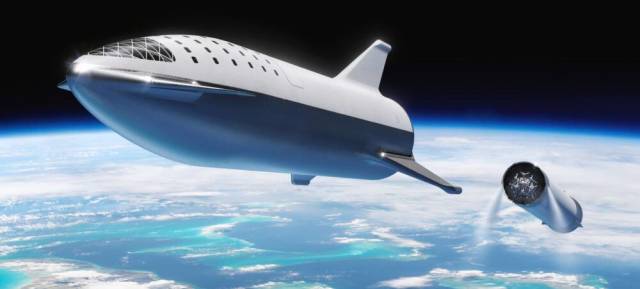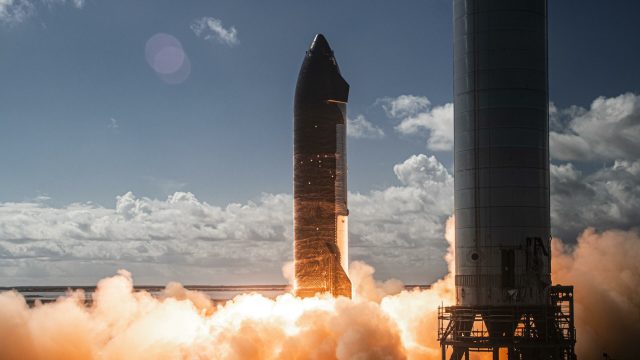According to the head of SpaceX, the first orbital launch of Starship can be carried out in January 2022. Previously, they wanted to do this in 2021.
SpaceX is preparing for the most important test in its history: the first orbital launch of the Starship system. Last year, Musk named 2021 as a possible deadline, noting at the same time that the launch could fail.
It will no longer be possible to meet these deadlines. The head of SpaceX named the new ones during a speech via video link at an event organized by the National Academies of Sciences, Engineering and Medicine. "This month we will finish with the launch table and the launch tower, in December we will conduct several tests and launch in January," TASS quoted him as saying.

Starship
Image Source: SpaceX
As before, the entrepreneur believes that the first launch is "associated with great risk," but SpaceX has no other way to make progress.
De facto, the postponement of the Starship launch to next year became known earlier: the other day it was reported that the Federal Aviation Administration (FAA) plans to complete the environmental assessment of the SpaceX orbital launch pad no earlier than December 31.
Whatever it was, Elon Musk's company has every reason to be proud. On the fifth of May, the prototype Starship SN15 successfully made a ten-kilometer "jump", after which it landed safely on its supports on the edge of the landing pad.
Immediately after that, as in the case of the prototype SN10, a flame broke out at the base of the system due to methane vapor escaping from the engine compartment, but it was quickly extinguished by the standard fire extinguishing system.
The tests were also important because the previous launch, in which the prototype Starship SN11 took part, ended in failure: shortly after the launch, an explosion thundered, and fragments of the device began to fall from the sky.
The cause of the accident was considered a fuel leak, which caused the ignition of one of the Raptor methane engines and the failure of the electronic control unit of the prototype Starship. This caused an unscheduled increase in pressure in one of the turbopumps when the engine was started.
Recall that a few months ago, SpaceX installed the Starship SN20 spacecraft, designed for the first orbital flight, on the Super Heavy accelerator. As a result, it turned out to be the largest rocket ever.

Starship
Image Source: SpaceX
Starship is a reusable manned spacecraft being developed since 2012. The system includes a Super Heavy accelerator: it is assumed that it will be able to launch more than 100 tons of payload into low Earth orbit.

